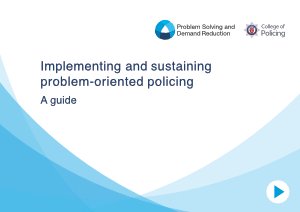By: David Weisburd, Stephen D. Mastrofski, Ann Marie McNally, Rosann Greenspan, James J. Willis
This paper provides the first national description of CompStat programs, considered in the framework of strategic problem solving. Relying on a survey of American police departments conducted by the Police Foundation, we examine the diffusion of CompStat programs and the nature of CompStat models throughout the Untied States. We also assess the penetration of models of strategic problem solving more generally into American policing. Our findings document a process of “diffusion of innovation” of CompStat-like programs in larger police agencies that follows a rapid pace. At the same time, our data suggest that many elements of strategic problem solving had begun to be implemented more widely across American police agencies before the emergence of CompStat as a programmatic entity, and that such elements have neem adopted broadly even by departments that have not formally adopted a CompStat program.
CompStat holds out the promise of allowing police agenices to adopt innovative technologies and problem-solving techniques while empowering traditional polcie organizational structures. However, our analysis suggests that at this stage, what most characterizes CompStat department and distinguishes them from othrs is the development of the control element of this reform. This leads us to question whether the rapid rise of CompStat in American police agencies can be interpreted more as an effort to maintain and reinforce the “bureaucratic” or “paramilitary” model of police organization (that has been under attack by scholars for most of the last two decades) than as an attempt to truly reform models of American policing.
Volume 2, Number 3, 2003, PP 421-456







